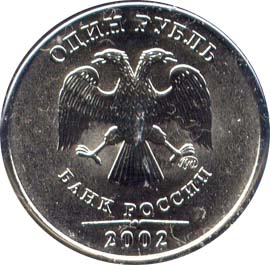Investing
Why Russia Was Downgraded to Junk at S&P, and Why Things Could Get Even Worse
Published:
The ratings agencies have struck again — this time in Russia. Standard & Poor’s has downgraded the nation to below investment grade. Vladimir Putin and his nation are now junk bonds. S&P also assigned a Negative outlook.
The reason for the new junk ratings may be more interesting than the actual news. After all, who out there was really investing in Russia with the idea that S&P had not yet classified Russia as “junk”?
S&P lowered the foreign currency sovereign credit ratings of the Russian Federation to BB+/B from BBB-/A-3. The local currency sovereign credit ratings were lowered to BBB1/A-3 from BBB/A-2 at the same time. The outlook remains negative, reflecting the view that the troubled nation’s monetary policy flexibility could diminish further.
S&P’s warning came with the note that Russia could face further downgrades if external and fiscal buffers deteriorate faster than expected in the next 12 months. Also, the expectation is that Russia’s real gross domestic product (GDP) per capita will average less than economies with similar real GDP per capita from 2015 to 2018. 2018?
Despite Russia moving to stem its currency’s crushing slide and despite raising interest rates to fight inflation, the ruble has since declined further while interest rates have risen above official levels. S&P now expects that inflation will rise above 10% in 2015.
S&P now puts the GDP per capita falling to $8,600 in 2015. In an effort to compare this to outside data, the CIA World Factbook shows Russia’s projected GDP per capita was estimated as $18,100 in 2013 and $17,800 in 2012. Much of that stems from the major currency drop, but it is nonetheless a dismal trend.
ALSO READ: 5 Things That Could Save Russia From Recession in 2015
So, how are the exchange traded funds and major American depositary shares that trade in New York acting after that downgrade?
Market Vectors Russia ETF (NYSEMKT: RSX) shares were down over 6% at $14.91 in the last half of the trading day on Monday. It has a 52-week trading range of $12.50 to $27.46.
Templeton Russia and East European Fund Inc. (NYSE: TRF) shares were down over 3% at $9.01. The stock has a 52-week trading range of $8.17 to $15.57.
Mobile Telesystems OJSC (NYSE: MBT) shares were down almost 10% to $7.77. The 52-week trading range is $5.85 to $20.03.
Yandex N.V. (NASDAQ: YNDX), the so-called Google of Russia, saw shares down 4% at $16.52. Its 52-week trading range is $15.03 to $41.35.
Want retirement to come a few years earlier than you’d planned? Or are you ready to retire now, but want an extra set of eyes on your finances?
Now you can speak with up to 3 financial experts in your area for FREE. By simply clicking here you can begin to match with financial professionals who can help you build your plan to retire early. And the best part? The first conversation with them is free.
Click here to match with up to 3 financial pros who would be excited to help you make financial decisions.
Have questions about retirement or personal finance? Email us at [email protected]!
By emailing your questions to 24/7 Wall St., you agree to have them published anonymously on a673b.bigscoots-temp.com.
By submitting your story, you understand and agree that we may use your story, or versions of it, in all media and platforms, including via third parties.
Thank you for reading! Have some feedback for us?
Contact the 24/7 Wall St. editorial team.